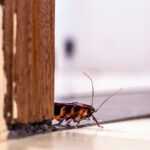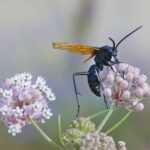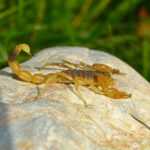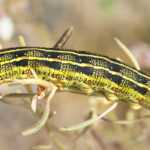Pack Rats: Identification, Habits, and Control Tips
Learn how to identify pack rats, understand their habits, and discover easy, effective ways to keep them out of your home.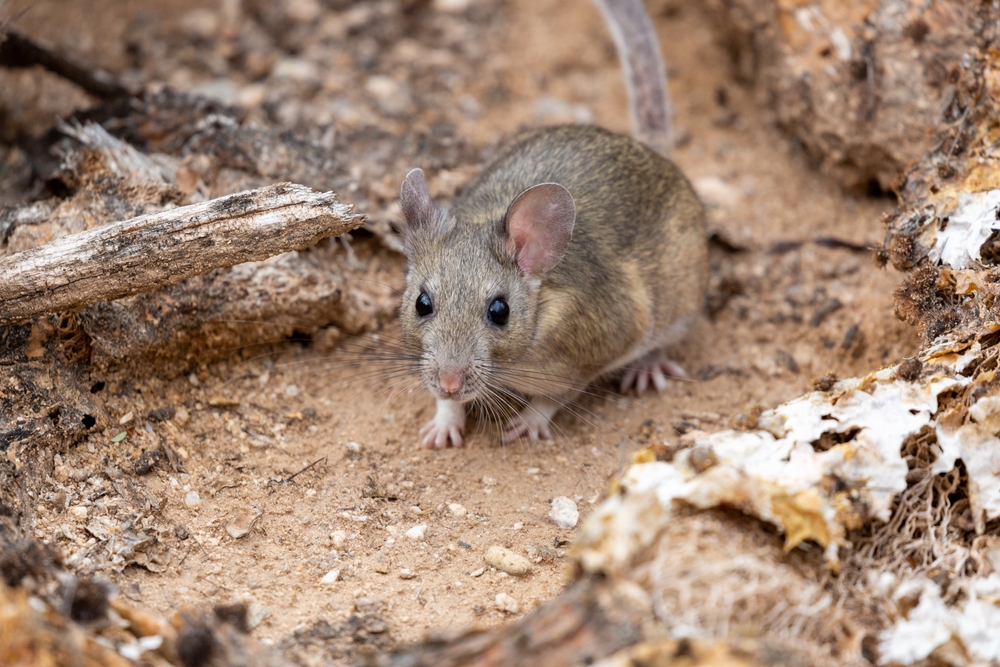
Ultimate Guide to Understanding Pack Rats: Identification, Habitat & Control
Pack rats are rodents that can cause significant damage to homes and yards. This guide will teach you how to identify these rodents, understand their habitats, diet, behaviors, and effectively manage and prevent infestations.
- These rodents can be identified by their distinct physical features such as bushy tails, large ears, long whiskers, and nocturnal habits, making early detection pivotal for control.
- They pose significant health risks and property damage due to their potential to carry diseases and parasites, gnaw on building materials, steal household items and shiny objects, necessitating prompt professional. pest control
- Preventing infestations involves sealing entry points in walls, maintaining cleanliness around the yard, removing shrubs and clutter, and utilizing professional pest control services for effective removal.
Identifying Pack Rats
These rodents, typically growing to about 30 centimeters from nose to tail, belong to the genus Neotoma. They are distinguishable from other rodents by several key features. Their brownish-grey back contrasts with a lighter underbelly, making them easily recognizable. Additionally, they have large eyes that enhance their night vision and long, bushy tails that are approximately as long as their body length.
One of the most noticeable characteristics is their long whiskers, which help them navigate their environment. Their large ears are another distinct feature that sets them apart from other rodents. These physical traits not only make them unique but also aid in their survival and nocturnal activities.
Compared to other common rodents like Norway rats, they have a more bushy tail and a different coloration pattern. Recognizing these differences is crucial for proper identification and subsequent control measures.
Common Pack Rat Species
The world of these rodents is diverse, with several species each having unique characteristics and habitats. The bushy-tailed woodrat (Neotoma cinerea) is one such species, known for its large eyes, long bushy tail, and soft fur that varies from gray to reddish brown. These bushy-tailed woodrats can thrive in various environments, from boreal forests to dry deserts.
Another notable species is the dusky-footed woodrat (Neotoma fuscipes), often found in coastal oak woodlands. These woodrats are recognized for their dense fur and long tails, which provide insulation in cooler climates. The desert woodrat, true to its name, inhabits dry desert regions and constructs nests in areas with dense vegetation for concealment, including woodrat middens.
The Mexican woodrat (Neotoma mexicana) ranges from Colorado and Utah south to Guatemala and Honduras, showing the geographic diversity of these rodents. The Allegheny woodrat prefers rocky slopes and caves, while the Arizona woodrat builds dens near yucca and cacti. Understanding these species helps in identifying and managing infestations more effectively.
Behavior and Habits
These rodents are primarily nocturnal, showing peak activity during nighttime hours. This nocturnal behavior means they are most active when humans are least likely to notice them, making early detection challenging. They are opportunistic feeders, with a diet consisting of seeds, fruits, vegetation, and occasionally household items when available.
One fascinating aspect of their behavior is their homing instinct. They often return to their nesting sites after being relocated, demonstrating a strong attachment to their homes. These nests, often built with sticks, small rocks, cactus parts, and other debris, can be intricate and well-hidden in rocky areas, shrubs, or caves.
Certain species, like the desert woodrat, prefer constructing their nests at the base of cacti or shrubs for protection against predators. These nesting habits not only provide shelter but also play a crucial role in their survival.
They are also known for collecting shiny objects and other materials, which they hoard in their nests as treasured belongings. This behavior can lead to them bringing in various items from yards and even abandoned buildings.
Habitat and Distribution
These rodents show the highest diversity in the Western United States and northern Mexico, thriving in various environments from dry deserts to cold rocky slopes. Cities like Phoenix and Tucson, as well as Southern Arizona, are common locations where these rodents are found.
Their adaptability allows them to inhabit a range of environments, including forests, rocky slopes, and human buildings such as sheds and abandoned buildings. For instance, Arizona woodrats typically build their dens near yucca plants or cacti, providing both shelter and food. The dense vegetation and rocks in these areas offer concealment from predators and harsh weather.
Understanding the specific habitats and distribution can help homeowners identify potential infestation areas and take preventive measures. Whether it’s in urban settings or rural landscapes, knowing their preferred environments is key to effective control.
Health Risks and Property Damage
These rodents are not just a nuisance; they pose significant health risks to humans and other mammals. They can carry diseases such as hantavirus, tularemia, plague, and salmonellosis, which can be transmitted to humans through contact with droppings, urine, or parasites like fleas and ticks. Their nests and droppings can also attract other pests.
In addition to health risks, they can cause substantial property damage. Their droppings can stain and deteriorate building materials, attracting other pests. They are known to gnaw on wiring, furniture, insulation, and structures, which can lead to costly repairs and even fire hazards.
Quick action from professional pest control services is crucial to prevent further damage. Addressing infestations promptly can help mitigate these risks and protect both health and property.
Signs of an Infestation
Identifying the signs of an infestation early can save homeowners a lot of trouble. One of the most obvious signs is the presence of nests, often built with sticks, small rocks, other debris, and materials found nearby. These nests can be hidden in attics, sheds, walls, and other secluded areas.
Droppings are small, pellet-like, and can be found in areas they frequent. Trampled grass or trails indicate regular movement in an area. Additionally, greasy marks on surfaces and gnaw marks on materials are telltale signs of their presence.
Another unique sign of activity is the disappearance of shiny objects and other household items, which they are known to collect and hoard. Regular inspections for these signs can aid in early detection and make it easier to address infestations before they become severe.
How They Enter Homes
These rodents are adept at finding their way into homes through small cracks and gaps. They can enter through openings in foundations, around windows, doors, and walls. Their ability to chew through tough materials like wood and even cement enhances their access to homes.
Beyond conventional entry points, they can infiltrate homes through vents, air conditioning lines, drainpipes, and even by climbing trees to access roofs. This versatility in finding entry points makes them particularly challenging to keep out.
Understanding how they enter homes can help homeowners take preventive measures to seal off these entry points and reduce the risk of infestation.
Preventing Infestations
Preventing infestations requires a proactive and thorough approach. Sealing all potential entry points around the foundation and installing screens over vents is crucial. Steel wool can be used to block entry points, as it is difficult for these rodents to chew through.
Maintaining a clean exterior by removing clutter, shrubs, and trimming vegetation reduces accessibility for these rodents. Inside the home, maintaining tidiness and proper trash disposal minimizes the chances of settling in. Trimming trees and bushes that are near the house can also help prevent access.
By taking these preventive measures, homeowners can significantly reduce the risk of infestations and protect their property from potential damage.
Effective Removal
When it comes to removal, traps are highly effective. Snap traps, in particular, can help control populations. Various baits such as seeds, nuts, meats, and dried fruits can be used to attract them to these traps.
Consulting with professional pest control services can ensure complete eradication. Hiring professionals allows for a thorough approach that minimizes the chances of returning after removal.
Effective removal methods, combined with preventive measures, can help homeowners maintain a rodent-free environment and protect their homes from future infestations.
Professional Pest Control Services
Professional pest control experts have specialized knowledge and tools for effectively eliminating infestations and other pests such as beetles. Using professional services can provide customized eradication plans based on the severity of the problem. Professional exterminators implement safe and humane methods for removal, ensuring the safety of pets and residents.
Understanding these rodents and their behavior is crucial for effective control and prevention. Recognizing the signs of an infestation early and taking proactive measures can protect your home, yard, and belongings from potential damage and health risks.
From identifying the different species to understanding their habits, diet, and habitats, this guide has provided comprehensive information to help homeowners manage these rodents effectively. Implementing preventive measures and seeking professional help when necessary can ensure a rodent-free home.
Frequently Asked Questions
Are these rodents good for anything?
They play a beneficial ecological role by aerating the soil and fertilizing it with their droppings, while also serving as a food source for various predators like bobcats and owls. Thus, they contribute to the health of their environment and the food chain.
What is the difference between a rat and these rodents?
These rodents, or Neotoma, are distinct from typical rats such as Norway rats due to their larger size, furry tails, and unique behaviors, like collecting shiny objects and other materials. While Norway rats have scaly tails and are more commonly found in urban areas, these rodents tend to inhabit dry deserts, rocky slopes, and woodland environments.
How can I identify these rodents?
To identify them, look for their brownish-grey back, lighter underbelly, large eyes, long whiskers, and bushy tail that is roughly the same length as their body. Recognizing these characteristics will help you distinguish them from other rodents.
What species are common in the US?
The common species in the US include the bushy-tailed woodrat, dusky-footed woodrat, desert woodrat, Arizona woodrat, Mexican woodrat, and Allegheny woodrat. Each of these species has adapted to various habitats, making them prevalent across the country.
What health risks do they pose?
They pose significant health risks as they can transmit diseases like hantavirus, tularemia, plague, and salmonellosis through their droppings, urine, and parasites such as fleas and ticks. It’s crucial to mitigate these risks by managing populations around your living space.
